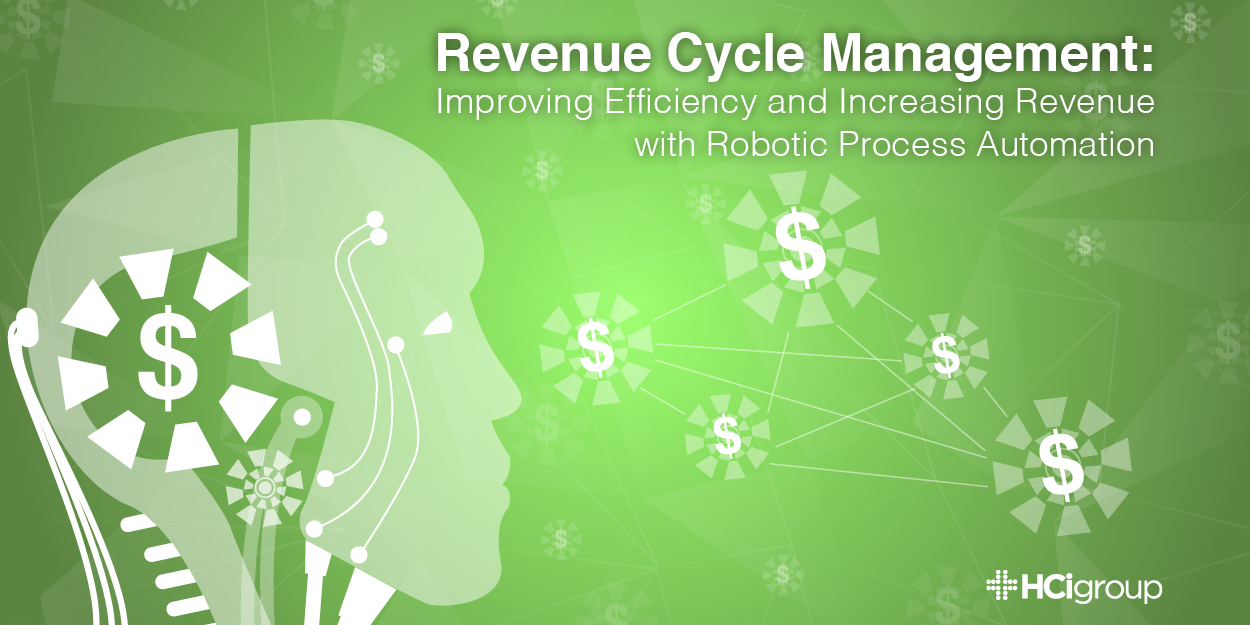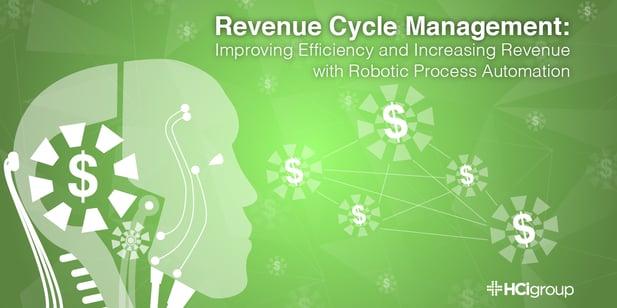Revenue Cycle Management: Improving Efficiency and Increasing Revenue with Robotic Process Automation


An expense is a cost for providing care. An uncovered expense is a liability that grows more significant with each passing day. The longer your accounts receivable age, the greater your burden of carrying them becomes. Submitting claims, and often re-submitting them, drains time and money from your healthcare organization. The post explores how robotic process automation can help improve efficiency and increase revenue within the revenue cycle process.
Robotic process automation (RPA) can help you improve efficiency and increase revenue by using artificial intelligence and machine learning to automate rules-based activities within your revenue cycle process. Software “robots” perform routine business processes and make simple decisions by mimicking the way agents interact with applications through a user interface. You can measure your return-on-investment in RPA in terms of key-performance-indicators like improvements in days to code and coding cost per account.
Reduce Operating Costs
With RPA, organizations can automate entire end-to-end processes with humans typically only managing exceptions. From electronic health records to patient payment portals, RPA automates functions across your organization’s systems, freeing you to deploy your resources more efficiently. RPA enhances revenue cycle management by enabling eight times the amount of work to be done per minute, than what could be completed manually. Your systems also can work around-the-clock, repeating processes without fail or rest, thereby lessening the resources required.
For example, instead of having an employee visit a payer’s website for the status of a claim, you could use RPA to check that same site. Your automated process also can assess the information that is needed to receive payment, pull that information from your connected systems and then re-submit the claim. No team members would have to touch the claim.
RPA often costs around $10,000 per single purpose bot, in comparison with human employees performing the same tasks for $40,000 per year or more. For more sophisticated uses, the cost can significantly increase due to the need for coordination across multiple lines of business.
Increase Collections and Decrease AR Days
Human errors are often to blame for aging receivables. Payers commonly reject claims for insufficient or improper documentation, delaying payment with each denial. RPA can eliminate human error and improve the accuracy of data entered, which increases the speed with which payment is collected. Furthermore, unlike with humans, each of whom may process a claim differently, you can immediately implement a change across your entire organization by revising the rules for automated tasks.
In an article on potential uses for RPA in healthcare, one healthcare executive told SearchHealthIT:
“As you know, there are code changes…code definitional changes, billing code changes and the like and it could be easier to train a fleet of robots who are doing repetitive activities and similar activities than it may be [to train] a large human staff. And so I see there being tremendous potential not just for the ability to accommodate change, but because there are a lot of rules-based activities within the revenue cycle process as well.”
Additionally, McKinsey & Company found that more than one-third of tasks in the healthcare industry could be automated, increasing efficiency throughout organizations.
In another example, RPA can be used to address missing/incorrect National Provider Identifier (NPI) numbers for referring physicians. Such errors often impact coding, but RPA can be used to identify all errors and query the NPI database and scrub referring provider data, submitting more accurate information would improve collections.
In addition to keeping your claims flowing, RPA also frees your providers from hours of administrative work, allowing them to see more patients, thereby generating additional revenue.
Want to continually decrease operating costs while improving efficiency and increasing revenue? Consider implementing RPA into your revenue cycle management.
To learn more about HCI's Revenue Cycle Services, contact us today!
Additional Revenue Cycle Resources
- Revenue Cycle Management: 3 Benefits of Collecting Payments Upfront
- Revenue Cycle Management: Key Steps in Preserving Revenue Integrity During Install
- Revenue Cycle Management (RCM) - Bank on Your Procedures: Charge for Every Procedure Billable and Performed
- Revenue Cycle Management (RCM) - Post EHR Implementation: Much Ado About Charging
- The Inseparable Connection Between Good Testing and Revenue Cycle Implementations
About HCI’s Revenue Cycle & Optimization Services
The HCI Group’s proprietary revenue cycle methodology recognizes that every part of your operation must work seamlessly to improve cash flow, while also assuring full compliance and growth in revenues over the long term. Our experienced resources make sure that every component of the revenue cycle is performing properly, because every single part affects the whole.
In addition, we can help assure that as payment models inevitably change, your organization keeps pace. From ACOs to value-based purchasing, to whatever unknown models lie in the future, we’ll make sure you are ready for the evolution of healthcare economics. Rather than reacting to changes, The HCI Group can make sure you anticipate change and prepare for it completely.


